The AMD Radeon RX 480 Preview: Polaris Makes Its Mainstream Mark
by Ryan Smith on June 29, 2016 9:00 AM ESTGaming Performance
So with the basics of the architecture and core configuration behind us, let’s dive into some numbers.
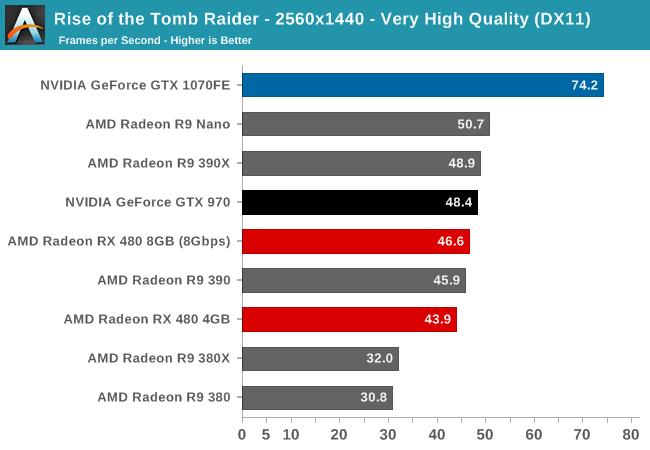
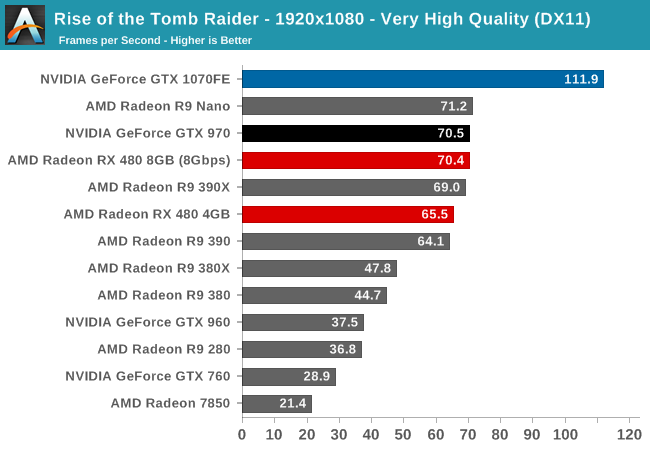

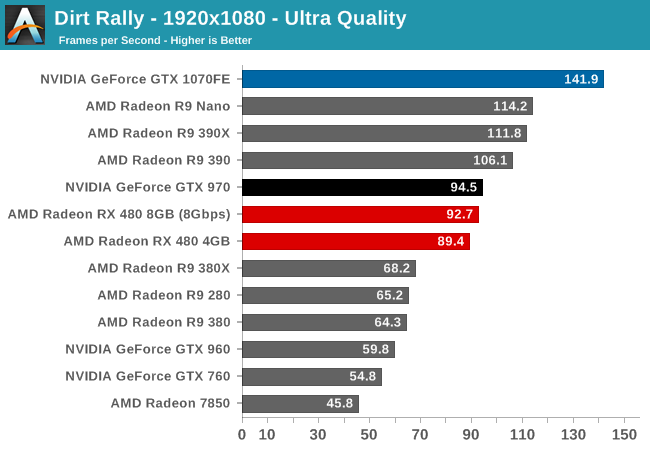
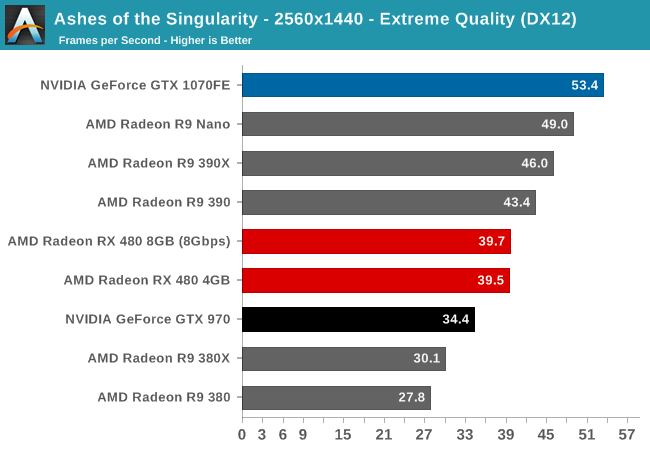
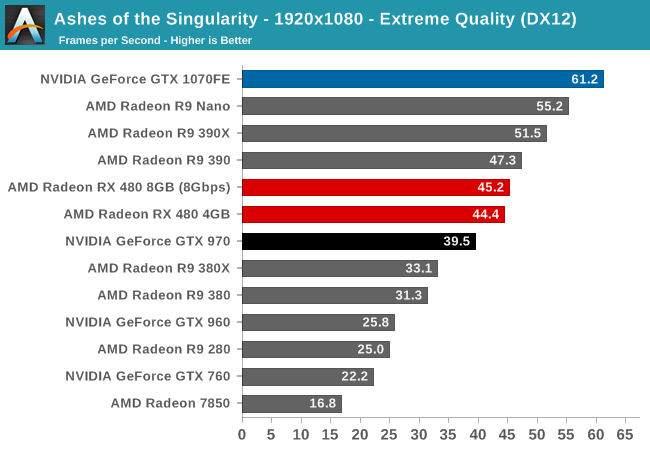
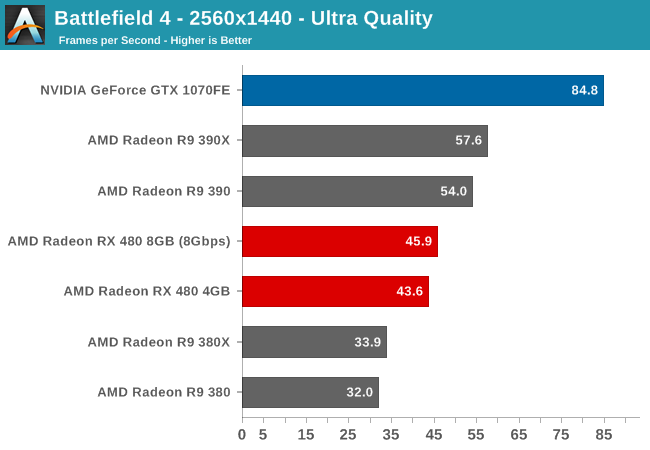
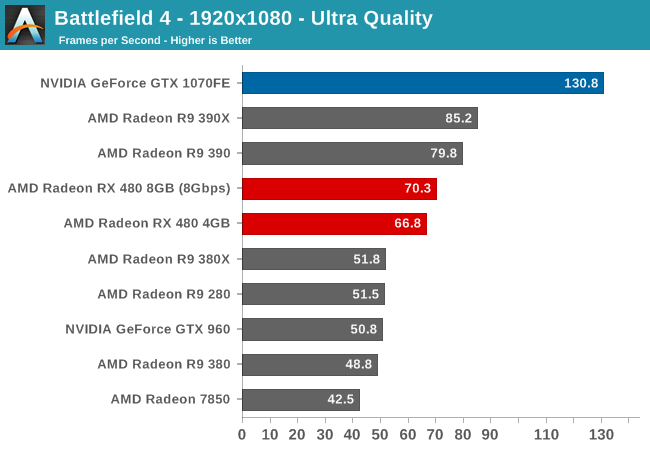

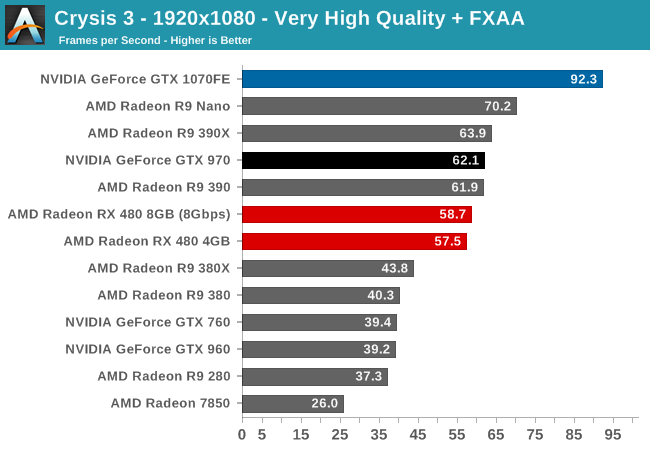
Overall, AMD is pitching the RX 480 as a card suitable for 1440p gaming as well as 1080p gaming and VR gaming. In the case of 1080p the card is clearly powerful enough, as even Crysis 3 at its highest quality setting is flirting with 60fps. However when it comes to 1440p, the RX 480 feels like it’s coming up a bit short; other than DiRT Rally, performance is a bit low for the 60fps PC gamer. Traditionally cards in the $199-$249 mainstream range have been 1080p gaming cards, and in the long run I think this is where RX 480 will settle at as well.










449 Comments
View All Comments
xthetenth - Wednesday, June 29, 2016 - link
It's a small chip and cheap card, so the design is delivering on the goal of making that level of performance cheap.fanofanand - Wednesday, June 29, 2016 - link
The problem as I see it, is that it's barely cheaper than a 970 that performs similarly. I get the whole 3.5 Gb issue with the 970, but based on those charts they are neck and neck with the 970 often beating it. Maybe my expectations were out of whack, but I had really hoped that AMD would be offering 970 performance for 960/950 pricing, given the updated node.Drumsticks - Wednesday, June 29, 2016 - link
I'm not expecting an /upgrade/ from the 390, but any insight into why the 480 barely beats the 390 despite 10% more shaders? Where are all of the uarch changes going to? Is it a lack of ROPs? That's about the only thing I can think of. Performance at 1440p seems fairly eh.watzupken - Wednesday, June 29, 2016 - link
I think its ROP starved. Which is typically the case for cards in the mid range.zoxo - Wednesday, June 29, 2016 - link
32 ROPs are very much more at home at 1080p. U have some leeway with frequency, but 1440p is a big jump in pixel count.D. Lister - Wednesday, June 29, 2016 - link
Yes, 32 ROPs vs 64 ROPs of the 390. It really only starts showing at >1080p resolutions though.extide - Wednesday, June 29, 2016 - link
480 has LESS shaders than 390.480 - 2304
390 - 2560
390X - 2816
smackosaurus - Wednesday, June 29, 2016 - link
So no 980 in the chart?Would be interesting to see a comparison in DX12 with the 480 and 980, but somehow after week of people saying the 480 was near 980 levels in DX 12...the 980 was somehow left out.
Great job.
Ryan Smith - Wednesday, June 29, 2016 - link
You can find that data (and more) in Bench: http://www.anandtech.com/bench/product/1748?vs=171...Otherwise 980 isn't in these charts as it's not really a meaningful comparison. Retail sales have already started winding down, and in terms of performance the RX 480 averages just 3% ahead of GTX 970. It's not a 980-level card.
warreo - Wednesday, June 29, 2016 - link
I have to disagree with you Ryan. People (unfairly or not, just read the all the comments) expected this to land somewhere between 970/980, so I really am not sure how you can say it's "not really a meaningful comparison." To me, it's good to know that it's basically equivalent to a 970, but also useful to know that it's on average 15-20% slower than a 980 by extension.Again, I could (and did) look it up on the Bench, but it would have been useful to have in the charts off the bat.